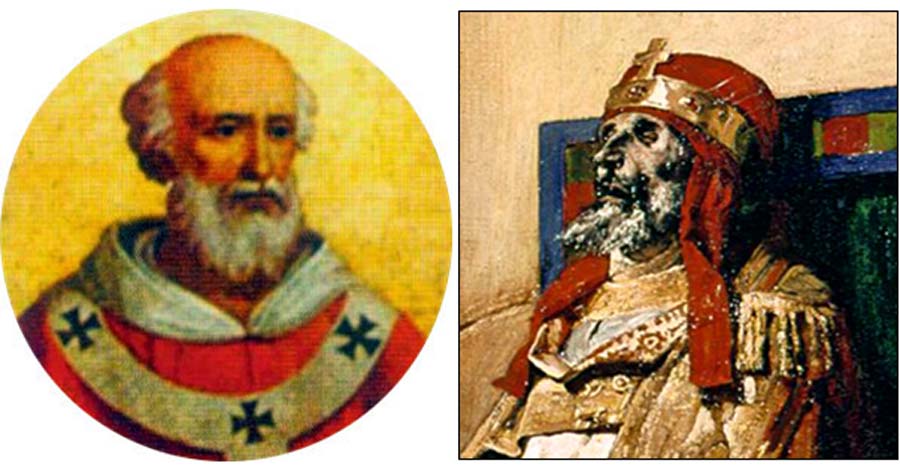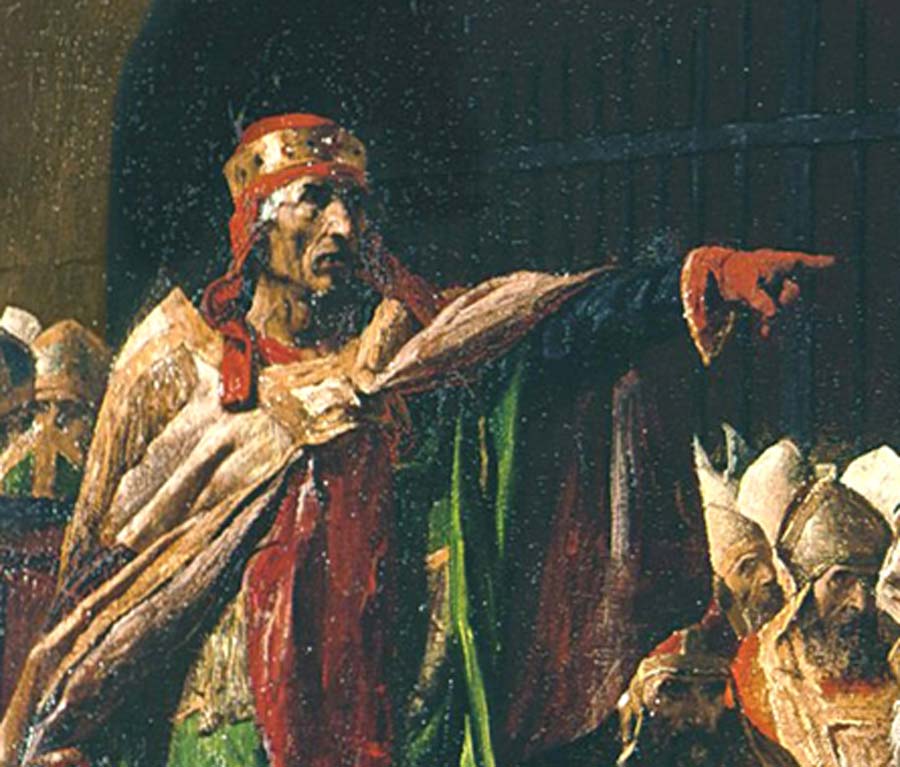
Synodus Horrenda: The Macabre Trial of the Corpse of Pope Formoso
In AD 897 the holy space of the Basilica of St John of Lateran, Rome, was violated by a truly sinister event inside the dark walls of the house of God. In the august presence of the Emperor Lamberto of Spoleto, Pope Stephen VI and the judicial curia, an unusual defendant was put on trial: the corpse of Pope Formoso, accused - it is believed unjustly - of the most atrocious wickedness.

On the left, Pope Formoso, whose body was exhumed, tried and condemned (Public Domain). On the right, an impressive 'close-up' of Lauren’s painting of the Pope’s corpse during the macabre trial.(Public Domain)
The Absurdity of the Corpse on Trial
Formoso, born in Rome in AD 816, was the first cardinal of the suburbicarian seat of Porto-Santa Rufina, already constituted in the third century, and reigned over the throne of Peter from AD 891 until his death on April 4, 896. In addition to the judges - among whom were Pietro di Albano, Silvestro di Porto and Giovanni di Velletri - the aisles were occupied by both high prelates and the common people anxious to attend a macabre show which more than any other could have aroused their curiosity, interest and horror.
Seated on a special throne, covered with a red cloth, was the corpse of Pope Formoso, 'sacratis vestimentis', or covered with sacred robes to formalize the unusual process and in an attempt to make the body – which had been entombed for more than nine months – more presentable. Formoso was buried with a hair shirt whose metal points still stuck in the decaying flesh of one of the successors of the 'Prince of the Apostles'. A suspected wound was visible in his chest. Could it have been caused by the tip of a spear?
Rigor mortis had caused the body to assume a strange 'inclined' position, as if it had just been laid down by an invisible cross, while an 'industrial' quantity of granules of incense was burning on the braziers, in an effort to combat the pungent smell of the rotting flesh of the Pope, disturbed in his eternal sleep.

Detail of Laurent’s "Public Prosecutor", Pope Stephen VI, during the strange trial of the corpse of Pope Formoso. (Public Domain)
Damned Be His Memory
What was the purpose of the macabre spectacle of putting a corpse on trial who could not defend himself, but was still required to be present to ‘listen’ to the accusations of his inquisitors? The eternal law of 'damnatio memoriae' was at play aimed to 'extinguish nomen', or to completely erase from memory the names of those who have lost their way, those who have gone too far against acceptable mainstream thinking and those who had 'undermined' the established order. The trial against Pope Formoso however, was a strange, ambiguous attempt of 'ceremonial magic' - a legacy of rites dating back to ancient Roman religion - which aimed to erase completely not only the memory of the deceased but also his 'shadow wandering in the otherworld’. If the good deeds of the Pope were kept in memory, then it meant that his aura of holiness could live on after his death, and this energy could sustain him.
Cicero himself affirmed that: "death is terrible for those whose life extinguishes everything, but not for those whose fame cannot perish." (Paradoxa stoicorum, II, 18).




